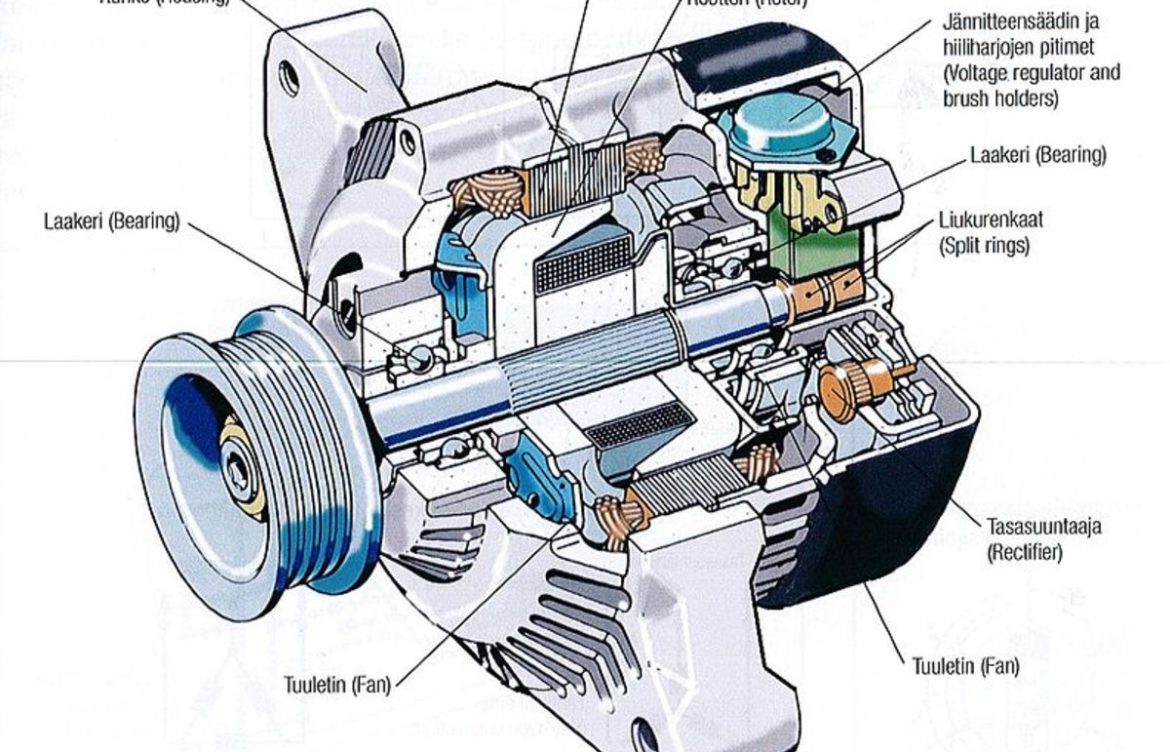Common problems, diagnosis, and solutions
⚠️ Common Alternator Problems: Diagnosis and Solutions
The alternator is the heart of your vehicle’s electrical system, and when it starts to fail, the symptoms can cause a wide range of confusing issues. Whether you’re running a stock system or a high-output setup, knowing the signs of trouble can save you from breakdowns, costly repairs, or even damaging your battery and electronics.
In this guide, we’ll cover the most common alternator problems, how to diagnose them, and what you can do to fix or prevent them.
🔎 1. Dim or Flickering Lights
Problem:
Headlights or interior lights flicker, pulse, or dim — especially when idling or using accessories.
Diagnosis:
Use a multimeter to check battery voltage:
- Engine off: Should read ~12.6V
- Engine running: Should read 13.8–14.8V
If the voltage drops below 13.5V while running, your alternator may be underperforming.
Solution:
- Check for a loose or worn drive belt
- Test alternator output with a load tester
- Upgrade to a high-output alternator if your system requires more power than the stock unit provides
🔋 2. Battery Keeps Dying
Problem:
You’ve replaced the battery, but it still won’t hold a charge.
Diagnosis:
If the battery is good but keeps draining, your alternator might not be recharging it properly.
Solution:
- Check all wiring connections (especially grounds)
- Ensure the alternator is producing voltage under load
- Check for a parasitic drain (like a stereo or alarm system left running)
- If your alternator can’t maintain 13.8–14.8V under load, it’s time to replace or upgrade
⚡ 3. Burning Smell or Overheating
Problem:
You notice a burning rubber or electrical smell from under the hood.
Diagnosis:
- The alternator may be overheating, caused by blocked vents, poor airflow, or overwork
- Belt slippage or misalignment can also generate heat
Solution:
- Inspect and replace serpentine belt if cracked or glazed
- Clean alternator vents with compressed air
- Consider a high-output alternator with better cooling for high-demand builds
💡 4. Battery Warning Light on Dashboard
Problem:
The battery icon or “ALT” light appears on your dashboard while driving.
Diagnosis:
This usually means the alternator is not charging the battery.
Solution:
- Check the alternator fuse and fusible links
- Test voltage at the alternator’s output terminal
- If the output is low or inconsistent, the voltage regulator may be failing
- Replace or rebuild the alternator
🛠️ 5. Alternator Making Noise (Whining or Grinding)
Problem:
You hear high-pitched whining, grinding, or rattling sounds from the engine bay.
Diagnosis:
- Whining = possible bearing wear or electrical interference
- Grinding = failing internal bearings
- Rattling = loose mounting or misaligned pulley
Solution:
- Check pulley alignment and tension
- Replace alternator if bearings are failing
- Use a noise-dampened alternator for audio-sensitive applications
🔌 6. Overcharging the Battery
Problem:
Battery is bulging, hot, or leaking acid — signs of overcharging.
Diagnosis:
Test system voltage:
- If it exceeds 15V consistently, the voltage regulator may be stuck
Solution:
- Replace voltage regulator (external or internal, depending on model)
- Replace alternator if regulator is built-in and damaged
- Install a properly regulated high-output alternator with built-in safeguards
🧰 7. Low Output at Idle
Problem:
Electrical accessories lose power or dim when engine is idling.
Diagnosis:
Some alternators are not designed to provide full amperage at low RPMs.
Solution:
- Upgrade to a high-output alternator with strong idle performance
- Consider a smaller pulley (consult manufacturer before changing pulley size)
- Do the Big 3 wiring upgrade to reduce resistance in the system
🔧 Pro Tip: Always Check the “Big 3” Wiring
Even the best alternator can underperform if your vehicle’s wiring can’t handle the current. Upgrade these key cables to 1/0 or 4 AWG:
- Alternator to Battery
- Battery to Chassis Ground
- Engine Block to Chassis Ground
🧪 Preventive Maintenance Tips
- Check belt condition every 6 months
- Clean battery terminals and alternator vents
- Test alternator output under load
- Inspect wiring for corrosion, especially in high-amp systems
✅ Final Thoughts
A failing alternator can mimic dozens of electrical problems. But with a little knowledge and the right tools, you can diagnose issues early and avoid costly damage.
Whether you’re dealing with a stock alternator that’s past its prime, or a high-performance system pushing its limits, HighOutputAlternator.com has the solutions, support, and hardware you need to keep your vehicle powered and protected.



